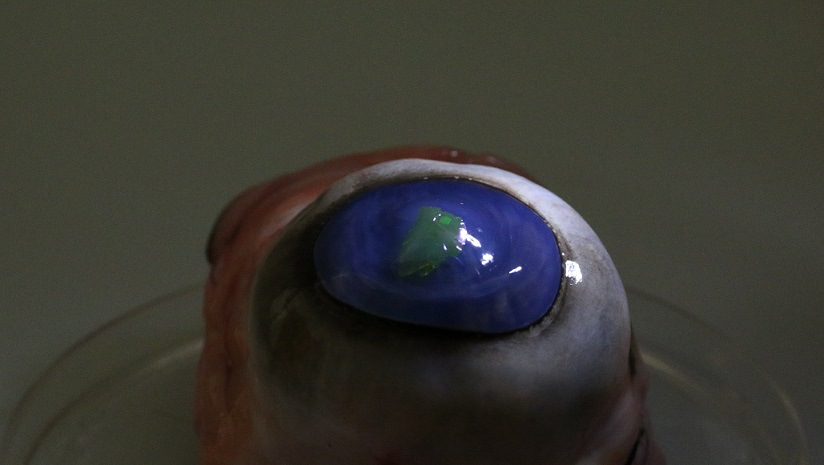Plato, superheroes and a visit to the abattoir
Published in Physics
2010, Boston. The 50th anniversary of the laser. A device that was originally famously proclaimed as “a solution in search of a problem” and that became the solution to so many crucial problems of modern society and science. What better way to pay tribute to the laser than to bring it quite literally to life? With this in mind, my former supervisor Andy Yun and I got to work on turning living cells into tiny lasers, using a green fluorescent protein produced by the cells themselves as optical gain medium. When our paper came out, it inspired many people in … well … unexpected ways: “Sharks with frickin’ lasers attached to their heads”, “bacterial infection that shoots lasers in your body”, “superheroes shooting laser beams from their eyes”. The first two seemed rather undesirable, let alone the red-tape involved in any study aimed at their realization. But superheroes with laser eyes? Back in ancient Greece, Plato even believed vision itself was mediated by “eye beams” that scan our environment. So could laser beams emitted from the eye have a more peaceful application than what is suggested in the comic books of modern times?

Fast forward to 2017, St Andrews, Scotland. Working with Professors Ifor Samuel and Graham Turnbull, our jointly supervised PhD student Markus Karl develops an ultra-thin organic semiconductor laser. He strips all non-essential components and ends up with a 200 nm-thick membrane that contains only gain medium and resonator; the pump is supplied externally by optical excitation. To fabricate these devices, Markus uses a carrier substrate and a sacrificial intermediate layer. In the final step of the fabrication, the membrane floats off the substrate and rises to the surface of a water bath. What now? Another solution in search of a problem?
We soon find that we can pick up the membranes with another substrate, or fish for them with a little net. Then we find that our membranes work like stickers, stickers that can turn any object into a laser. Ifor suggests to put them on banknotes as a new security feature. A membrane laser on every banknote in the United Kingdom would probably make our membrane lasers the world’s most numerous type of laser.
But what about Plato and the superheroes? Our lasers are not only among the world’s thinnest, they also have very low lasing thresholds. But how low? Say, compared to laser safety standards? It takes a bit of courage but eventually my student and I go to see the department laser safety officer to ask how their intensity – and more importantly the intensity of the optical pump – compare to permissible levels for intentional ocular exposure. In other words, could we use our membranes to shoot laser beams from one’s eyes without blinding ourselves? We check, twice, three times, four times, but the answers seems to be that it should be safe, with about a ten-fold margin before reaching maximum permissible exposure levels.
We refrained from testing our lasers on the human eye – at least for now. Instead, the last part of our study involved a trip to an abattoir near Edinburgh to buy some cow’s eyes. (Ophthalmology research often uses them as model for the human eye.) A few hours later a cow’s eyeball in a Petri dish shoots a green laser beam across our optics lab. In the future, we hope to use such lasers as an authentication and access control feature, complementing a biometric iris scan. For now, we are left with the slightly weird image of a zombie supercow shooting laser beams from its large blank eyes…
Malte Gather
Reference: Nature Commun. 9, 1525 (2018) doi:10.1038/s41467-018-03874-w
Follow the Topic
-
Nature Communications

An open access, multidisciplinary journal dedicated to publishing high-quality research in all areas of the biological, health, physical, chemical and Earth sciences.
Related Collections
With Collections, you can get published faster and increase your visibility.
Women's Health
Publishing Model: Hybrid
Deadline: Ongoing
Advances in neurodegenerative diseases
Publishing Model: Hybrid
Deadline: Dec 24, 2025



Please sign in or register for FREE
If you are a registered user on Research Communities by Springer Nature, please sign in